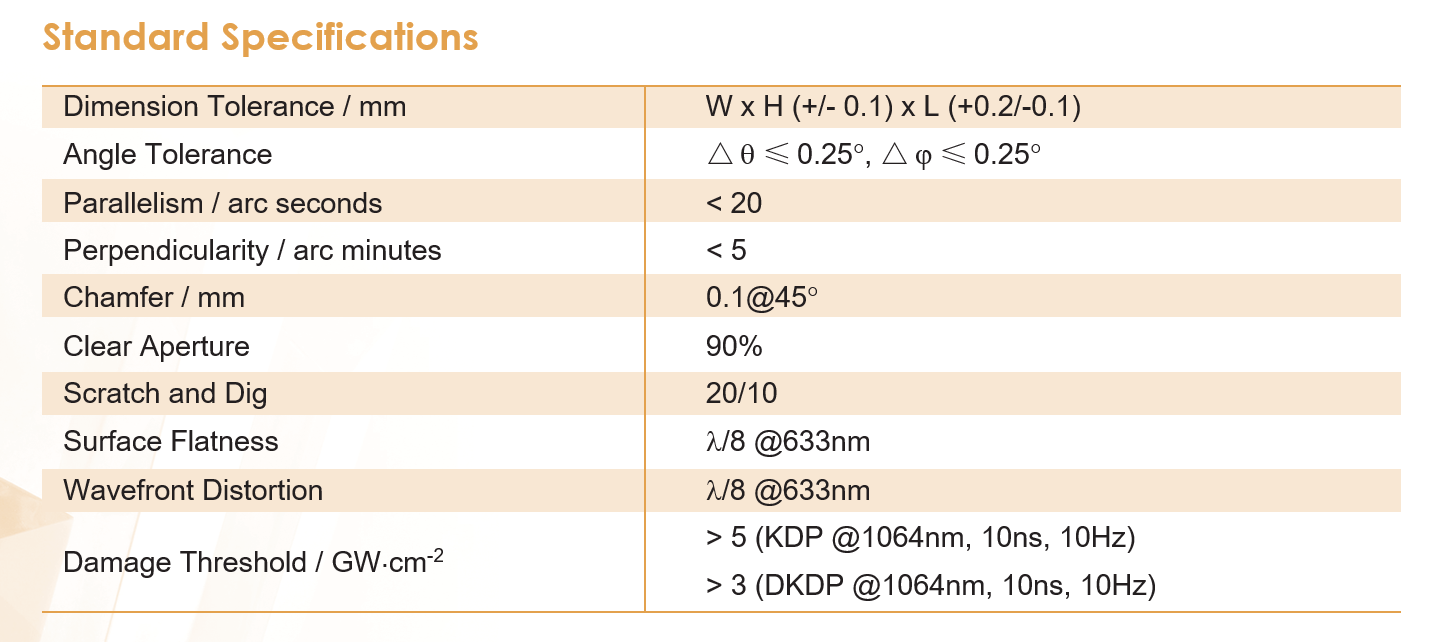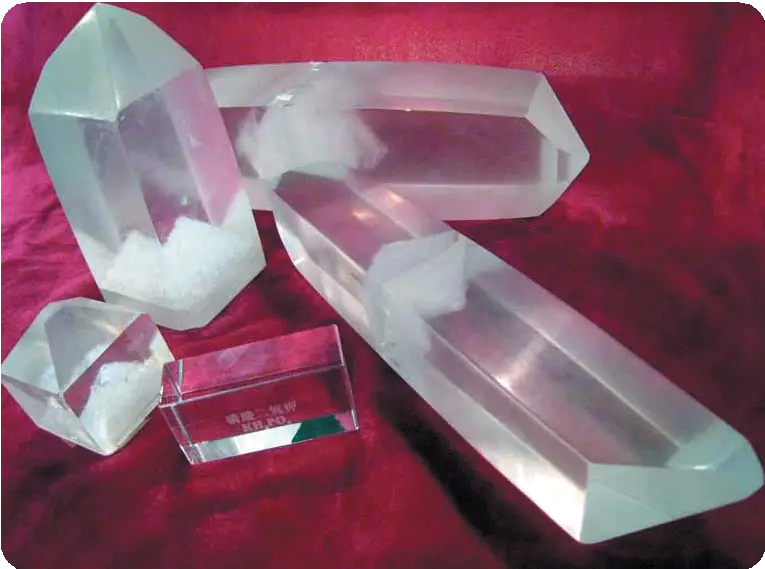Potassium Dihydrogen Phosphate (KDP), or KH2PO4, is another extensively used nonlinear optical crystal. It is particularly renowned for its efficiency in frequency doubling (second harmonic generation, SHG) and other nonlinear optical processes like optical parametric oscillation. KDP crystals are valued for their high optical quality, clear transmission range, and excellent nonlinear coefficients, making them integral to many laser-based applications.

Properties of KDP:
- High Nonlinear Coefficients: KDP has high nonlinear optical coefficients, which are key for efficient frequency conversion processes like second harmonic generation and parametric oscillation.
- Wide Transparency Range: The crystal is transparent from the UV to the mid-infrared range, facilitating its use across various wavelengths.
- Good Electrical Properties: KDP also exhibits notable electro-optic properties, making it useful in modulating light when an electric field is applied.
- High Damage Threshold: It can withstand high optical intensities before sustaining damage, which is crucial in high-power laser applications.
Applications of KDP:
- Laser Frequency Doubling: KDP is commonly used to double the frequency of Nd:YAG lasers, converting 1064 nm infrared light to 532 nm visible green light. This application is popular in laser pointers, display technology, and scientific instrumentation.
- Pockels Cells: Due to its electro-optic properties, KDP is used in Pockels cells, which are used to control the polarization of light and act as fast optical switches in laser technology.
- Optical Parametric Oscillators (OPOs): KDP’s capability to facilitate phase matching makes it suitable for use in OPOs to generate tunable laser outputs across a wide range of frequencies.
- High-Energy Laser Systems: In large-scale laser facilities, like those used for inertial confinement fusion research, KDP crystals are used for their ability to handle high laser powers and convert frequencies effectively.
The growth and fabrication of KDP crystals require meticulous control to ensure clarity and uniformity, as defects can significantly impair their optical performance. The handling of KDP also involves considerations for its hygroscopic nature; it needs to be kept in dry conditions to prevent water absorption which can degrade its optical properties. These characteristics and capabilities make KDP a fundamental component in the advancement of laser and optical sciences.
Shapeoptics is Able to Offer
- Rod diameter from 1mm~40mm
- Length from 1mm~60mm
- Coating upon your request
Potassium Dihydrogen Phosphate (KDP) and Potassium Dideuterium Phosphate (KD*P ) are among the most widely-used commercial NLO materials, characterized by good UV transmission high damage threshold, and high birefringence, though their NLO coefficients are relatively low. They are usually used for doubling tripling and quadrupling of a Nd:YAG laser at the room temperature In addition, they are also excellent electro-optic crystals with high electro-optic coefficients, widely used as electro-optical modulators such as Q-switches, Pockels Cells, etc.


Shapeoptics offers a comprehensive range of materials and advanced equipment for custom and OEM optical components, leveraging over 20 years of expertise in manufacturing lenses, prisms, windows, and more. We utilize high-quality materials like UV and IR grade fused silica, Germanium, and ZnSe, among others. Our state-of-the-art techniques and equipment minimize waste and optimize delivery times. Our in-house capabilities include standard and custom coatings across the UV-NIR spectrum, ensuring high quality and compliance with all industry standards. For precision and reliability in optics, contact Shapeoptics for your next project.



